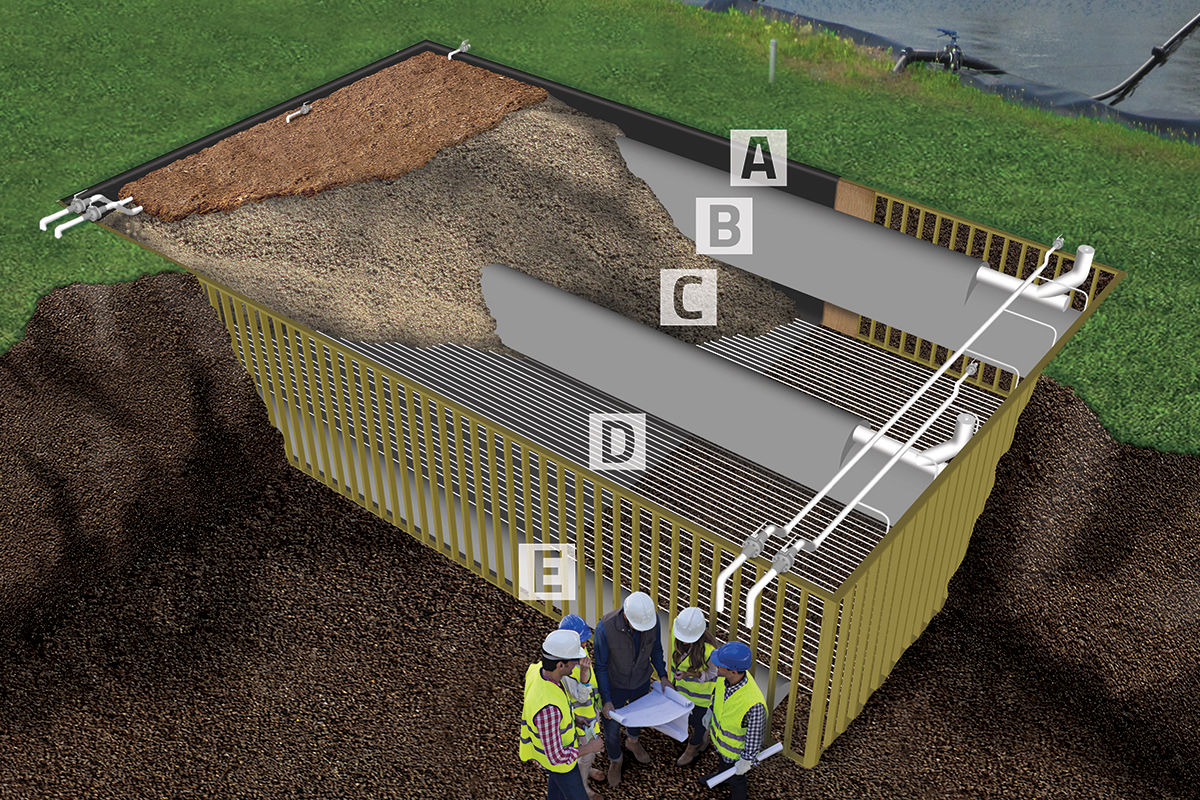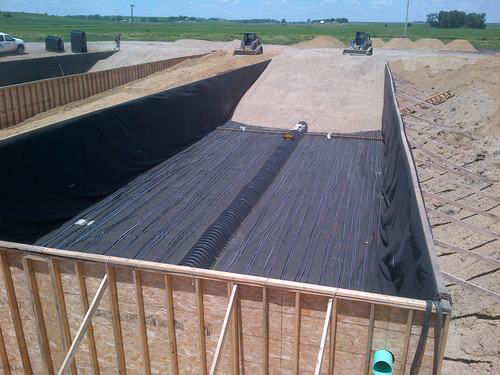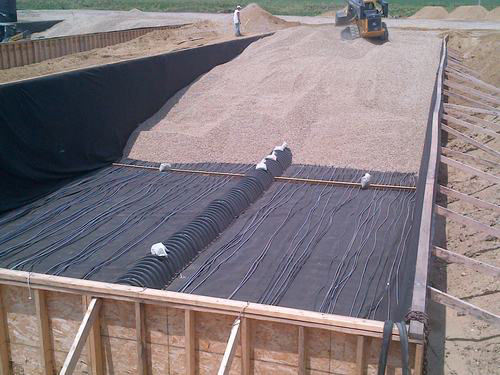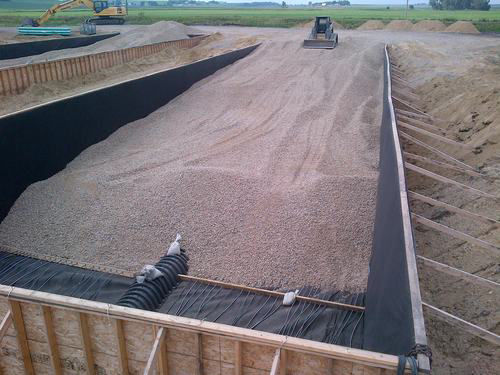

1. Reduces Total Ammonia to <1 mg/L
year-round, even in <0.5°C water
2. Polishes cBOD to <5 mg/L, TSS to
<10mg/L, and provides partial
effluent disinfection
3. O&M requirements similar to an
aerated lagoon
1. Nitrification in any climate
2. Post-lagoon polishing
3. Airport de-icing fluid treatment
4. Decentralized wastewater
treatment
5. Water reuse applications
1. Colesburg, Iowa
2. Glencoe, Ontario
3. Harrah, Washington
4. Long Plain First Nation, Manitoba
5. Mentone, Indiana
6. Misipawistik Cree Nation, Manitoba
7. Buffalo-Niagara International
Airport, New York
8. Calgary International Airport,
Alberta
9. Food Processing Plant, Wisconsin
Using the patented Step-Feed process, the SAGR overcomes each of the four factors that would otherwise prevent nitrification:
1. Oxygen: The stone bed is fully aerated, meaning
there is plenty of dissolved oxygen for the
nitrifying bacteria even in the dead of winter.
2. Surface area: The clean stone is sized to
optimize hydraulic conductivity as well provide
ample surface area for the nitrifying bacteria to
grow on.
3. Competition from cBOD: SAGR beds are sized to provide cBOD polishing in addition to nitrification.
4. Cold water temperatures: Because nitrifying bacteria grows much more slowly in cold water, the SAGR process prebuilds and stores nitrifying bacteria while the water is warm so that it is already in place once metabolism and reproduction slow in cold water.




Floating Social Menu and Ribbons
Click the "gear" icon to change the layout of the social bar. This text will be removed on preview/publish.